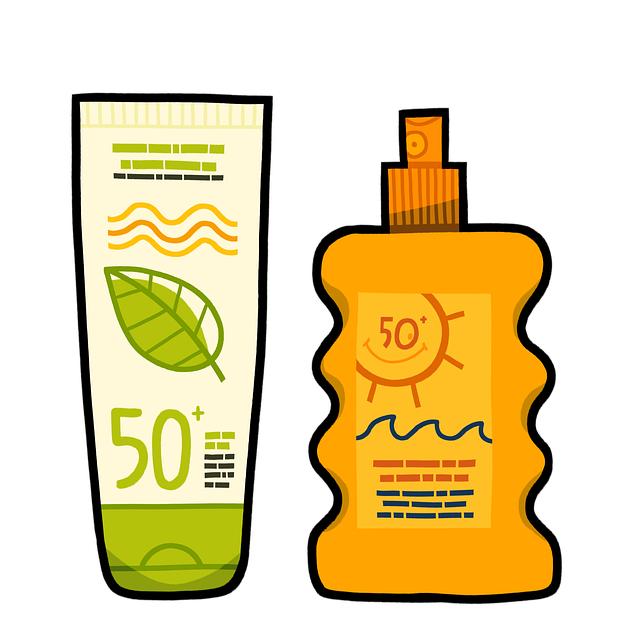In the dance between sun and skin, the radiant warmth that kisses our faces each day harbors a secret power—the ability to turn back the clock on youthful vitality or accelerate the march of time. Sunscreen, often overlooked as a mere beachside accessory, is in fact the unsung hero in our quest against premature aging. With its invisible shield, it holds the promise of preserving our skin’s suppleness and grace, warding off the stealthy advance of wrinkles and age spots. Join us as we uncover the art of using sunscreen not just as a protective barrier, but as a powerful ally in maintaining a youthful, radiant complexion. Embrace this confident journey into the world of skincare, where the sun’s rays are transformed from adversary to ally in the timeless pursuit of beauty.
Shield Your Skin with Science: Understanding Sunscreen Ingredients
In the quest for youthful, radiant skin, understanding the ingredients in your sunscreen can be your secret weapon. While the sun provides essential vitamin D, its ultraviolet (UV) rays are a major culprit in premature aging. Broad-spectrum sunscreens protect against both UVA and UVB rays, with ingredients like zinc oxide and titanium dioxide offering physical barriers that reflect sunlight. For those who prefer a lightweight feel, chemical filters such as avobenzone, oxybenzone, and octocrylene absorb UV radiation, transforming it into harmless heat.
- Zinc Oxide: Provides a strong shield against both UVA and UVB rays, perfect for sensitive skin.
- Titanium Dioxide: Known for its gentle, non-irritating properties, making it ideal for acne-prone skin.
- Avobenzone: Offers comprehensive UVA protection, crucial for preventing skin aging.
- Oxybenzone: Absorbs UVB and short UVA rays, although it’s essential to consider its environmental impact.
- Octocrylene: Stabilizes other sunscreen ingredients and provides additional UVB protection.
Choosing the right sunscreen with these active ingredients is essential in forming a robust defense against premature aging. Remember, the best sunscreen is the one you’ll wear consistently, so find a formula that feels good on your skin and suits your lifestyle.

Master the Art of Application: Techniques for Optimal Coverage
Achieving a flawless shield against the sun’s relentless rays involves more than a quick slather. To ensure optimal coverage, begin by selecting a broad-spectrum sunscreen with an SPF of at least 30. Apply it generously on all exposed skin, including often-missed spots like the ears, neck, and tops of feet. Remember, the magic lies in the application technique:
- Layering: Start with a moisturizer if your skin is dry, allowing it to absorb fully before adding sunscreen. This method ensures a seamless blend and enhanced absorption.
- Dotting Method: Dispense small dots of sunscreen on different parts of your face, then spread evenly. This ensures even distribution and avoids missing patches.
- Pat, Don’t Rub: Gently pat the sunscreen into your skin instead of rubbing it in. This helps maintain the integrity of the protective barrier.
For those who wear makeup, consider a sunscreen primer to create a smooth base and extend the longevity of your look while keeping your skin safeguarded. Embrace these techniques to not only shield your skin but also to nurture it, ensuring it remains youthful and radiant.
Timing is Everything: When and How Often to Reapply for Maximum Protection
Applying sunscreen correctly is a fine art, and knowing the right timing can make all the difference in your skin’s future. For optimal protection, apply sunscreen generously at least 15 to 30 minutes before stepping into the sun. This allows the formula to fully absorb and form a protective shield. If you’re planning a day outdoors, don’t forget to reapply every two hours. But remember, frequency matters even more if you’re swimming or sweating. In such cases, reapply every 40 to 80 minutes depending on the sunscreen’s water resistance.
- Morning Routine: Apply sunscreen after your moisturizer but before makeup.
- Midday Boost: Keep a travel-sized sunscreen in your bag for easy reapplication.
- Cloudy Days: Don’t skip sunscreen; UV rays penetrate clouds.
- After Swimming: Always reapply, even if using water-resistant sunscreen.
Consistency is key, so incorporate these steps into your daily ritual. Your skin will thank you, not just today, but for years to come.




